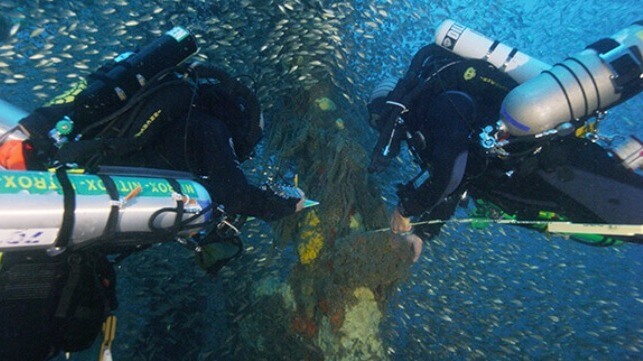Study: Shipwrecks are Ecological Treasures

The seabed is littered with wrecks of all types of ships and vessels, estimated by UN conservation organization UNESCO at three million hulls. The cultural and memorial value of wrecks is well-accepted, but scientists are now advancing the understanding of how shipwrecks are also ecological treasures: they create homes for underwater life.
In a new study published in the journal Bioscience, the team of scientists argues that wrecked vessels are a rich underwater habitat for a wide variety of organisms, from tiny microbes to large marine creatures, offering valuable ecological resources. In essence, wrecked vessels create artificial structures and materials that stand out from the surrounding ecosystem.
The study shows what divers, fishermen and artificial-reef advocates have always known: microorganisms, algae and invertebrates like corals and sponges thrive on submerged debris, and small fish find shelter in the crevices of sunken material. Larger fish and predators use shipwrecks as feeding grounds and rest stops during their journeys.
Though shipwrecks act as biodiversity hotspots, they can also harbor invasive species that can negatively impact the surrounding ecosystem. When shipwrecks reach the bottom of the seabed, they provide a new surface that may be suitable for invasives. Non-native species may also be transported by the ships themselves, on the hull or in ballast water, and then released when the wreck hits the bottom.
"Shipwrecks stand as poignant reminders of the intricate relationship between human culture and the natural world. From microorganisms to large predators and marine mammals, they support a thriving habitat that enriches biodiversity in ways we are only beginning to comprehend,” said Peter Campbell from the Cranfield Forensic Institute at Cranfield University.
Campbell was part of a team of scientists that also included the National Oceanic and Atmospheric Administration, the Bureau of Ocean Energy Management, the University of Southern Mississippi, Ulster University, University of Edinburgh and the Woods Hole Oceanographic Institute in Massachusetts. Their study raises the possibility of better understanding of the ecology of other submerged manmade structures, such as artificial reefs.
Surveillance of wreck sites could also aid future efforts to protect aquatic species at risk from shifts in the marine ecosystem. The research sheds fresh light on connectivity - the ability of species to move freely from place to place so they can find food and breed. It also aids in the understanding of the complex process known as succession, generally how the mix of species and habitats at a given location changes over time.
Other valuable insights include processes such as disturbance caused by temporary changes in environmental conditions and degradation brought about by habitat destruction.
The team suggests creating a global "biocultural heritage" monitoring network for shipwrecks that are ripe for scientific exploration, and protecting wreck sites for both their ecological and cultural merits.
